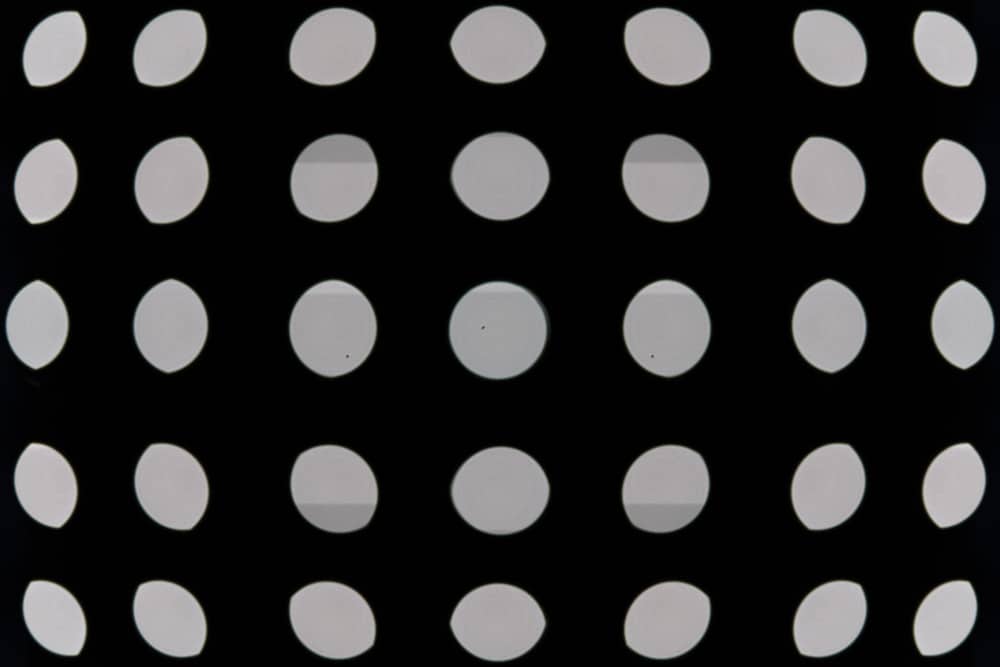The is the third in a series of posts about the Voigtlander 65 mm f/2 Apo-Lanthar macro lens. The series starts here.
The Voigtlander 65 mm f/2 Apo-Lanthar performs so well at distance that it’s natural to think of using it for portraits or in other situations where the bokeh is important.
There are two pieces to bokeh. The first is what things look like when they are well out of focus (OOF), and the second is how the transition from OOF to in-focus happens. The second is complicated, but the first is very simple. What you see when part of the image is well OOF is each point in the image times the OOF point spread function (PSF, in this case, aka bokeh balls). So you can understand what the bokeh in the OOF regions is gonna look like by looking at the OOF PSF across the frame. After you’ve looked at a few of these images that I’m going to show you here, you can see how the deep-OOF bokeh of just about any lens is going to look like with just about any scene.
The technique that I used to obtain the images below is explained here. I just moved the camera around and captured the PSFs all over the frame, then assembled them in Photoshop. I used a Sony a7RII for the captures.
Wide open:
You can see that the PSFs are very clean. You can also see that occlusion starts almost immediately as you move away from the center, so the bokeh isn’t going to be as pretty as it might otherwise be. Still, this is a credible performance.
Stopping down to f/4:
Hardly any occlusion, but the PSFs aren’t circular anymore, because of the 10-blade straight-cut aperture.


Leave a Reply